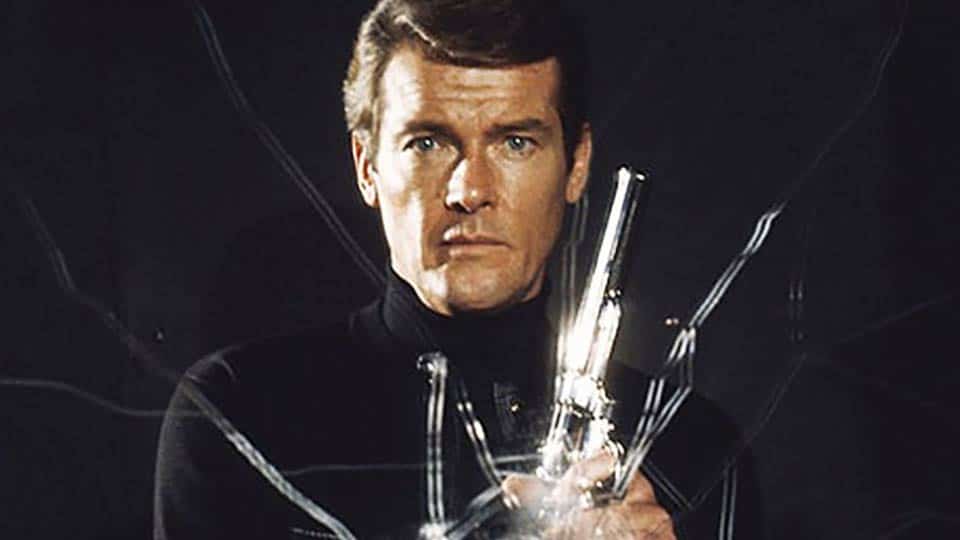Roger Moore, the third and longest-serving actor to take on the mantle of super-spy and British movie icon James Bond, was no stranger to the written word. His autobiography, My Word is My Bond, was released a decade ago, which was followed up by Last Man Standing, a glorious account of his showbiz friendships, and the poignant A Bientot, released last year shortly after his death at the age of 89.
The 007 Diaries: Filming Live and Let Die is Roger Moore’s earliest foray into literature. The volume was originally released in 1973, and now, thanks to The History Press, has been given a new lease of life in hardback format.
Almost unbelievably, given the long hours that major stars work when shooting a movie, Moore kept a detailed diary of his time making Live and Let Die – his big screen debut as James Bond. Each day is numbered from his first day in pre-production as Bond to the wrap on the final day’s shooting – from B-Day 1 to 84. It covers not only Sir Roger’s approach to the part, but contains elements of social commentary and an insight into the problems of major American cities where the movie was filmed. It captures a moment in time whilst giving Bond fanatics an insight into what happened behind the scenes and the personalities involved in the making of one of the most acclaimed James Bond pictures of all time.
The over-riding impression is that the words are embellished from humbler written accounts, rather than literal translations of diary entries. Either that, or Sir Roger had one eye on publication all along – because the book is a string of entertaining anecdotes and a great pleasure to read. For example, it opens with an account of Roger practicing taking sharp corners in a speed boat for the extended chase sequence. The tighter the turn, the greater the likelihood of the engine cutting out. Long story short: an over-zealous Moore ends up hospitalised, drugged up with painkillers, the American doctor wanting to know if he can pay for treatment, with concerns he’s lost his front teeth. All of this is told with Roger’s fine wit, capacity for self-deprecation and the tongue-in-cheek humour that defined his era as Bond.
There are more serious points raised by the book. There’s a reminder that the civil rights movement was still in full swing, brought to the fore on account of the many black people in the cast and crew, with production occurring in New Orleans and New York. This takes a humorous turn later on when Moore takes it upon himself to play practical jokes on Yaphet Kotto, the actor playing the villainous Mr Big, for taking himself a little too seriously… (Moore has form on this – his send-up of Jack Watson recounted in Last Man Standing is hilarious!) Notably, Moore pulls no punches in the later part of the book recalling filming in the most dangerous parts of Manhattan. This is perhaps no surprise, since New York in any film of the 1970s is a byword for seediness and crime.
Readers will learn about Moore’s working relationship with Guy Hamilton, the director, as well as producers Cubby Broccoli and Harry Saltzman. There’s also a detailed account of how that amazing publicity still of Moore calmly studying his drink whilst a huge explosion happens a short distance away came to be staged. And perhaps most memorably, the time spent on the real crocodile/alligator farm whose owner – Ross Kananga – found his name being given to a character in the movie in tribute.
Criticisms of the book are that it is a touch repetitive, though in ways that bear out this reviewer’s long-standing belief that very few people will have had a better life than Sir Roger – there’s endless dining out with the movers and shakers of the entertainment industry, not least George Martin. Also, this edition uses colour photographs for the glossy inserts that are less personal than the ones used in the first edition – excising those taken by Moore’s then-wife Luisa, which is a shame. There’s also a cautionary editor’s note to warn readers that something written in the 1970s contains the cultural mores of that era, and isn’t in tune with today’s “progressive” (or stiflingly conformist and intolerant of dissent – take your pick) values. Do readers really need to be patronised in this way?
Thankfully, this edition retains the excellent publicity photo by Terry O’Neill for the cover, and where it detracts in oleaginous hand-wringing, it at least makes up for in extras – primarily a heartfelt foreword by David Hedison, now in his nineties, who played Felix Leiter, and an afterword by Gareth Owen, whose name will be familiar to anyone who saw Sir Roger’s theatrical tours in more recent years. Both centre on the palpable sense of loss that fans of the great man also feel, that with Sir Roger’s passing last year, we lost not only an icon, but a gentleman and the last of his kind, and he remains sorely missed. This new edition of Sir Roger Moore’s first book is a lovely tribute and a wonderful way to remember him.
Publisher: The History Press Publication Date: 1st June 2018


